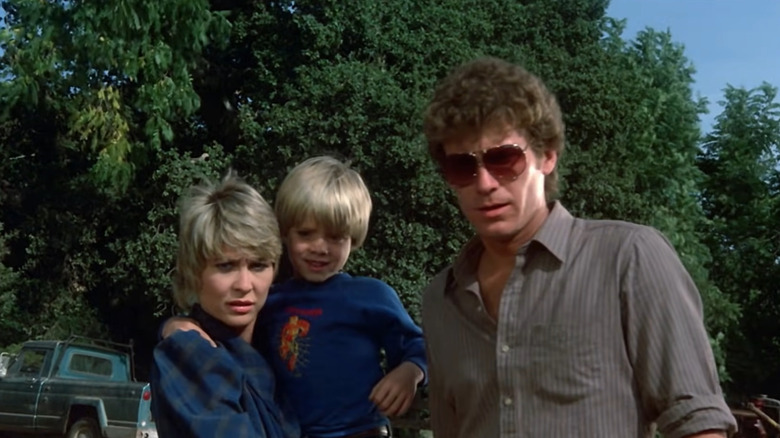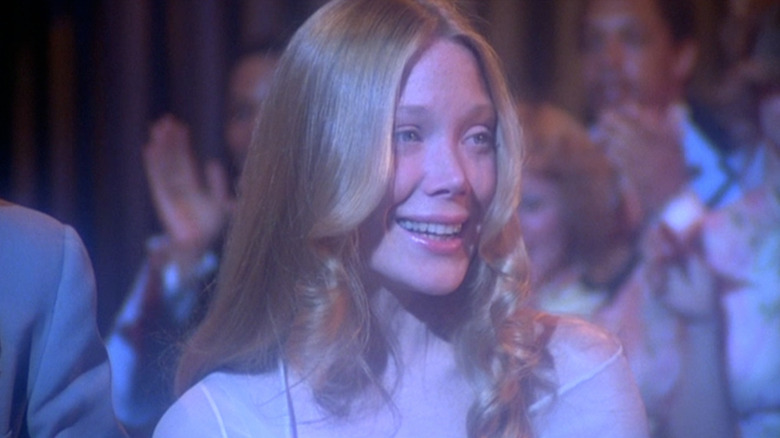Why Stephen King's Cujo Doesn't Have Any Chapters
In a 2006 issue of The Paris Review, Stephen King was asked about his choice to write his 1981 novel "Cujo" without any chapter breaks. Whereas most books use those chapter breaks to give the reader a chance to breathe, King's dog-focused horror book refuses to let up, creating an experience where it's very, very easy for readers to fly through hundreds of pages in a single sitting. Although King originally intended for the book to have regular chapter breaks, he explained why he changed his mind:
"I can remember thinking that I wanted the book to feel like a brick that was heaved through your window at you. I've always thought that the sort of book that I do — and I've got enough ego to think that every novelist should do this — should be a kind of personal assault. It ought to be somebody lunging right across the table and grabbing you and messing you up. It should get in your face. It should upset you, disturb you. And not just because you get grossed out. I mean, if I get a letter from somebody saying, I couldn't eat my dinner, my attitude is, Terrific!"
Sure enough, "Cujo" is a giant assault to the senses. It's the sort of book that demands you carve out an entire evening just to focus on it. There is no "Oh, I'll just read a few pages here or there when I have the time." If you're not prepared to have your entire night ruined, you're reading the book wrong.
Cujo isn't Stephen King's first book formatted this way
Of course, Stephen King loves to play around with structure, to stretch the limit of what a mainstream novel is even allowed to do. Case in point: his debut book, "Carrie," which also told its story in a string of escalating small scenes. The book is divided into three parts, AKA three moments to breathe, and the rest is nonstop head-hopping and jumps through time. It's a chaotic, ambitious, adrenaline rush of a book, so it's no surprise it became the huge career-making hit it did.
Perhaps King's coolest trick with a book structure came in his 1982 book "The Running Man." It's a fairly short novel (especially by King's standards) which divides itself into 100 short chapters, except the numbers for the chapters are counting down, not up. This simple choice adds an unavoidable sense of dread to the whole experience, keeping the audience wondering what sort of horrible thing King's got planned for when the number hits zero.
Most readers take the usual format of a book — with numbered chapters ordered "1, 2, 3..." — for granted, as that's just how things are done in the medium. But that increasing number has a comforting assumption baked into it: that the chapters of the main characters' lives will keep going after the book closes, and we simply won't be around to read about it. The reverse order of "The Running Man" exposes the comfort of that format and flips it on its head; there are no real numbers before zero, so this implies the main character's probably not going to make it. "Cujo" and its lack of chapter headings may have thrown some readers for a loop, but when it comes to playing around with format conventions, "The Running Man" was King's boldest experiment.

